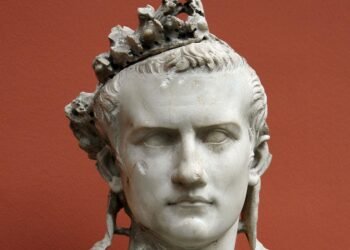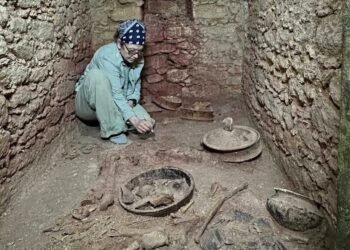A joint Armenian-German research team of archaeologists from the National Academy of Sciences of Armenia and the University of Münster in Germany has unearthed the remains of a previously unknown early Christian church in the ancient city of Artaxata, near the modern-day city of Artashat in Armenia.

The church, an octagonal structure with cruciform extensions, is believed to date back to the 4th century CE, making it the oldest archaeologically documented church in Armenia. This remarkable find was announced by Professor Achim Lichtenberger of the University of Münster, who described the discovery as “sensational evidence for early Christianity in Armenia.” Dr. Mkrtich H. Zardaryan of the National Academy of Sciences of Armenia, who co-led the research, added that octagonal churches were previously unknown in Armenia, but were common in the Eastern Mediterranean during the 4th century CE.
The octagonal building, which spans approximately 30 meters in diameter, features a simple mortar floor and terracotta tiles. The team discovered remains of wooden platforms in the church’s cross-shaped extensions, which were radiocarbon dated to the mid-4th century CE. Fragments of marble, imported from the Mediterranean, suggest that the church was once lavishly decorated.
The church’s location in Artaxata is historically significant. According to tradition, Gregory the Illuminator converted the Armenian King Tiridates III to Christianity in Artaxata in 301 CE. This event marked Armenia as the first Christian state in the world, a milestone that still resonates in the country’s religious and cultural history. The nearby medieval monastery of Khor Virap, a well-known pilgrimage site, stands as a reminder of this heritage, situated close to the newly discovered church.

Artaxata, also known as Artashat, was once the capital of the Kingdom of Armenia under the Artaxiad and Arsacid dynasties. The name of the city has Iranian roots and can be interpreted as “the joy of Arta,” with “Arta” meaning truth. It developed into a major metropolis during the Hellenistic period and remained the capital for nearly six centuries. The Armenian-German team has been studying the Hellenistic settlement of Artaxata since 2018 as part of a broader research project.
The recent discovery highlights the significance of Artaxata in the spread of early Christianity and the cultural connections between Armenia and the broader Mediterranean world. The church’s architectural design, specifically its octagonal shape, is a key point of interest for researchers, as it mirrors structures found in the Eastern Mediterranean during the same period. This architectural style had not been previously documented in Armenia.
The team’s excavation work, which began in September, is ongoing, with researchers hoping to determine to whom the church was dedicated. “We are eager to continue our exploration and to better understand the role this church played in early Christian Armenia,” said Professor Lichtenberger. The discovery offers fresh perspectives on the region’s architectural and cultural exchanges with the Mediterranean.
























